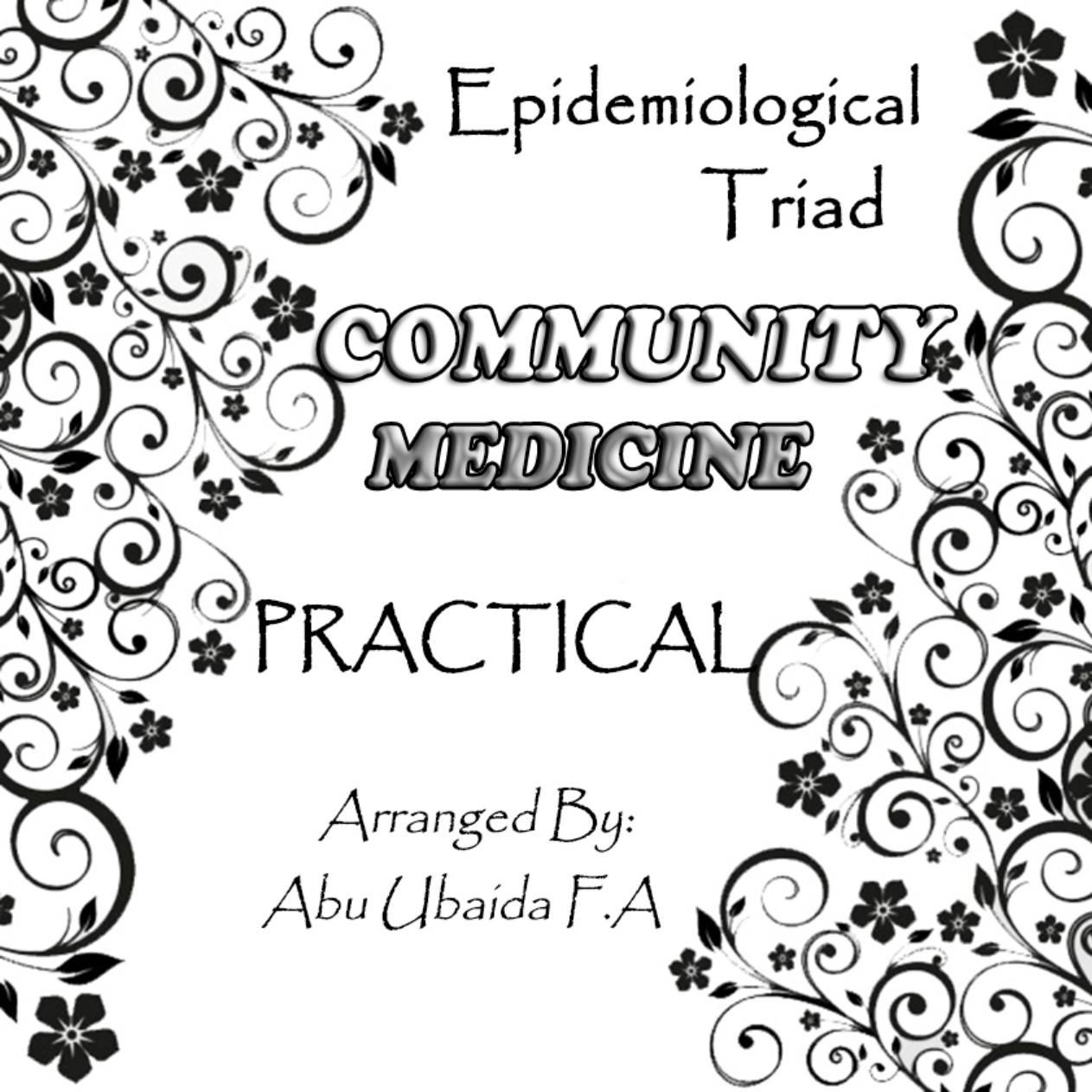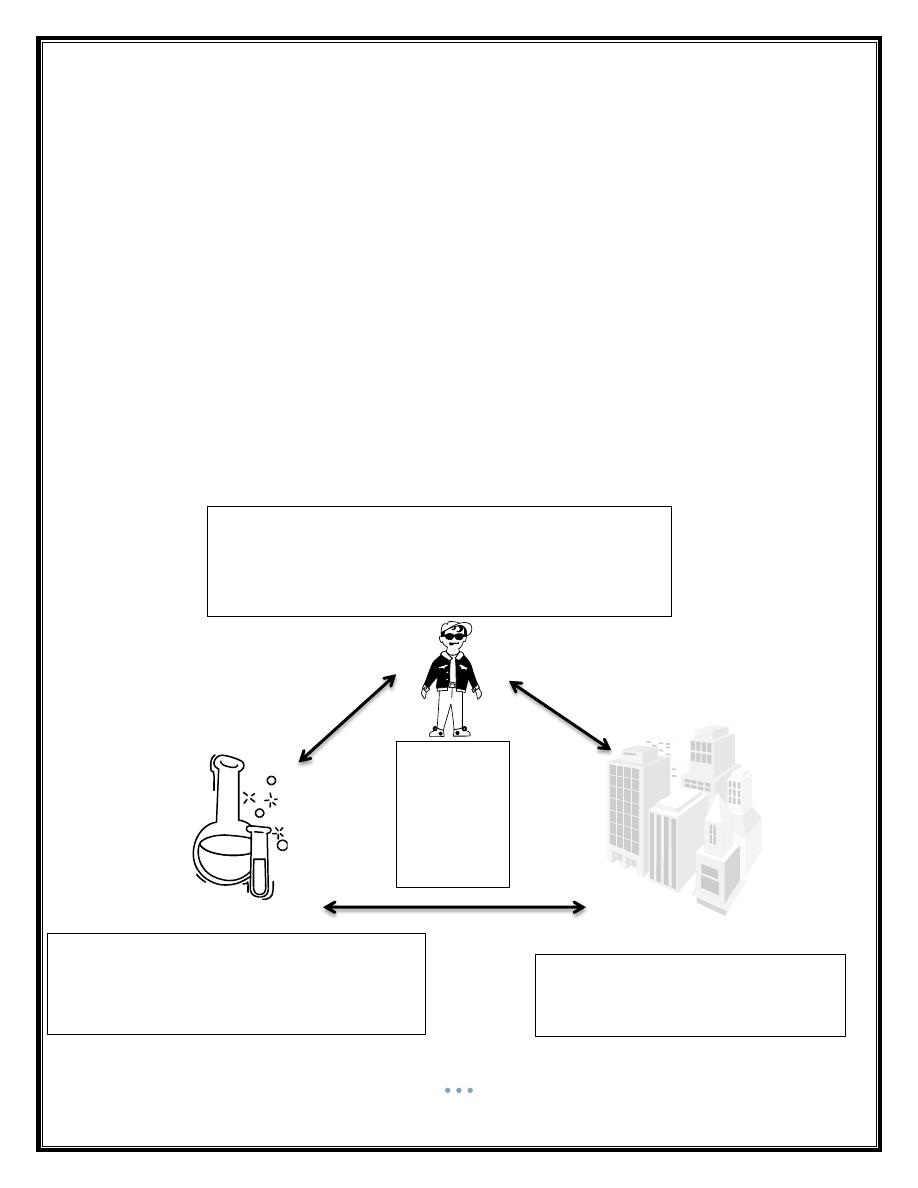

1
Epidemiologic Triads
OBJECTIVES OF THE LECTURE
By the end of this lecture students will be able to:
• Explain epidemiologic triads as a model of study of disease
causation.
• Describe natural history and spectrum of infectious diseases
and their implications for public health.
“Concepts”
• Descriptive epidemiological triad
• Analytical epidemiological triad
• Natural history of disease
• Spectrum of disease
• Public health implications
Purpose of studying causal models
• Studying how different factors can lead to ill health
generates knowledge for disease prevention & control.
• The classic epidemiological triangle or triad help understand
the relation between a disease, disease causing agent and
environment.
• Studying how different factors can lead to ill health
generates knowledge for disease prevention & control.

2
• The classic epidemiological triangle or triad help understand
the relation between a disease, disease causing agent and
environment.
Epidemiological Triads
Descriptive Epidemiology is a Necessary Antecedent Of Analytic
Epidemiology.
To undertake an analytic epidemiologic study you must first:
• Know where to look
• Know what to control for
• Be able to formulate hypotheses, compatible with laboratory
evidence
Descriptive Epidemiology
Triad:
• Person
• Place
• Time
Analytical Epidemiology
Triad:
• Agent
• Host
• Environment

3
Person
• Age
• Gender
• Marital status
• Ethnicity/Race
• Behavior / life-style factors
• Socio-economic status
– Education
– Occupation
– Income
• Biological factors, passive/active immunity, concomitant
illness.
Place
• Geographically restricted or widespread (pandemic)?
• Relation to water or food supply (clusters: multiple / one)
• Residence (rural, urban, remote)
• Climate (temperature, humidity)
Time
• Changing or stable?
• Seasonal variation.
• Clustered (epidemic) or evenly distributed (endemic)?
• Point source or propagated.

4
Time Trends
• Point source e.g. food-borne outbreaks), in terms of hours /
days
• Seasonal - cyclicity (e.g. common cold, influenza), in terms
of months
• Propogative (e.g. water borne epidemics), in terms of weeks
/ months
• Secular (e.g. morbidity / mortality of non-communicable
diseases), in terms of years
• Cluster in time / place
The Basic Triad of Analytic Epidemiology
THE THREE PHENOMENA ASSESSED IN ANALYTIC
EPIDEMIOLOGY ARE:
HOST
ENVIRONMENT
AGENT

5
The Analytical Epidemiologic Triad
This model comprises a susceptible host (the person at risk for
the disease), a disease agent (the proximate cause), and an
environmental context for the interaction between host and agent.
Thus, development of disease is a combination of events:
• A harmful agent
• A susceptible host
• An appropriate environment
Agents
• Biological (micro-organisms)
• Physical (temperature, radiation, trauma, others)
• Chemical (acids, alkalis, poisons, tobacco, medications /
drugs, others)
• Environmental (nutrients in diet, allergens, others)
• Nutritional (under- or over-nutrition)
• Psychological experiences
Host Factors
• Host factors are intrinsic factors that influence an
individual’s exposure, susceptibility, or response to a
causative agent. These include:
• Genetic endowment
• Immunologic state

6
• Personal behavior (life-style factors): diet, tobacco use,
exercise, etc
• Personal characteristics (described before, under “person”),
including: age, gender, socio-economic status, etc.
Environment
Environmental factors are extrinsic factors which affect the agent
and the opportunity for exposure. These include:
– Physical factors: e.g. geology, climate (temperature,
humidity, rain, etc)
– Biological factors: e.g. insects that transmit an agent
– Socioeconomic factors: e.g. crowding, sanitation, and
the availability of health services
Phenomena which bring the host and agent together: vector,
vehicle, reservoir, etc.
Summary of Analytical Triad
• Agent factors include infectious microorganisms, e.g. virus,
bacterium, parasite, or other agents.
• They may be necessary but not always sufficient alone
to cause disease.
• Host factors are intrinsic factors that influence an individual’s
exposure, susceptibility, or response to a causative agent
• Environmental factors are extrinsic factors which affect the
agent and the opportunity for exposure.

7
Example
The number of people who become diseased with tuberculosis
will depend on:
• characteristics of the agent,
• environmental factors,
• And host factors
Explain some of these factors.
The Analytical Epidemiology Triad
Health
or
Illness?
Host:
Intrinsic factors, genetic, physiologic
factors, psychological factors, immunity.
Environment:
Physical, biological, social
Agent:
Amount, infectivity,
pathogenicity, virulence,…
